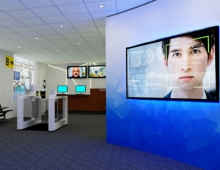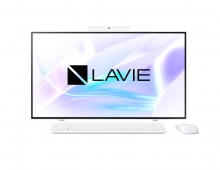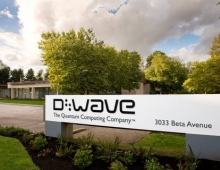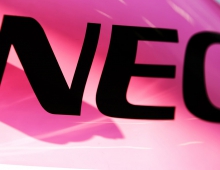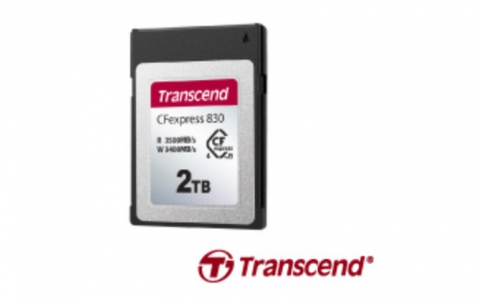
NEC LCD Technologies Announces High-End 21.3" LCD with RGB LED
NEC LCD Technologies announced that sample shipments of its new 21.3-inch (54cm-diagonal), ultra-extended graphics array ("UXGA"), amorphous silicon thin film transistor liquid crystal display ("TFT LCD") module will commence April 2005.
This model is aimed at professional color processing use such as in digital photo editing, digital pre-press operation and various computer design work. Supporting Adobe RGB (* Note 1,) which is the de facto standard color space in the professional color processing fields mentioned above, it is equipped with a high luminance RGB light emitting diode ("LED") array as the light source of the back-light system.
The main characteristics of the new model are as follows:
(1) Ultra-Wide Color Gamut:
The combination of the new LED back-light system and NEC LCD Technologies' own unique super-advanced super-fine TFT ("SA-SFT") technology achieves ultra-wide color gamut of 109% for Adobe RGB in the area ratio of CIE XYZ Chromaticity Diagrams (*Note 2.) This achieves industry-leading levels within the display unit category while maintaining brightness of 230cd/m2. It also realizes display of vivid color that has not been enabled with conventional display devices such as LCD modules with cold cathode fluorescent lamp ("CCFL") back-light units.
(2) Ultra-Wide Viewing Angle:
SA-SFT technology enables an ultra-wide viewing angle of 170 degrees (contrast ratio greater than 10:1) and reduces the color and/or contrast shift problem that occurs due to a change in viewing angle. It also allows stable color display with little, if any, influence on viewing angle difference for multi-screen use.
(3) High-Grade Grey Scale Performance:
Switchable 10-bit internal look up table ("LUT") enables selection of the most suitable 16.77 million colors out of 1.06 billion colors. This realizes effective use of wider color space.
(4) Color Correction:
The luminance of each color LED is individually controllable. This enables adjustment of the white balance of each screen for multi-screen use. It is also beneficial in cases where color matching between the display screen and other input and output ("I/O") equipment such as digital cameras, image scanners or printers is necessary. In addition, the tuning range of the white balance of the LED back-light system is wider than that of LCD modules with CCFL back-light units. As a result, the stability of the luminance and the chromaticity can be preserved against age deterioration.
(5) Environmentally-Friendly Initiatives:
The new module is completely mercury free. This has been achieved by omitting the CCFL as the back-light system. In addition, the influence of higher harmonic waves on surrounding electronic equipment is dramatically reduced through omission of the inverter circuit used in CCFLs.
Recently, digitalization of a series of operations such as image inputting, editing, proofing, checking, archiving and sharing is expanding within professional fields such as press, publishing, printing and photo editing, for the purpose of operational efficiency improvement and cost reduction. This kind of digital workflow in the above mentioned fields can only exist on a commercial basis when accurate, common color space is shared throughout each process coherently. Adobe RGB, which covers wider color space, has obtained a position as the standard color space in professional digital color processing fields. As a result, many products supporting Adobe RGB have dominated in the professional color processing fields; this applies not only to application software, but also to hardware such as digital cameras and printers. On the other hand, there have only been a few display devices which can reproduce the color space of Adobe RGB color space efficiently to date. Therefore, designers and color proofing operators have been forced to print test sheets repetitively in order to confirm whether the intended appropriate color has been actually reproduced or not. Thus, display units supporting Adobe RGB have been long sought after.
"Our new 21.3-inch TFT LCD module with RGB LED back-light technology will make obsolete inefficient conventional trial-and-error methods, and will aid realization of full digital workflow in professional color processing fields, in turn contributing to great cost reduction and operational efficiency improvement." said Hidetoshi Usui, department manager in charge of product planning and marketing, NEC LCD Technologies, Ltd.
NEC LCD Technologies will continue to strive to respond to the emerging needs of a variety of industrial fields and to meet the demands for high picture quality in professional fields with our cutting edge technology and prompt market response capabilities.
*Notes:
(1) Adobe RGB: One of the RGB color space standards for the computer color processing field, developed by Adobe System in 1998. "Adobe" is a registered trademark or trademark of Adobe Systems Incorporated in the United States and/or other countries. (2) CIE XYZ Chromaticity Diagrams: A two-dimensional graph transformed from three-dimensional color space based on the CIE XYZ system by holding the total luminance constant. CIE XYZ system is one of the standard colorimetric systems, which was defined by Commission Internationale de l'Eclairage in 1931.
The main characteristics of the new model are as follows:
(1) Ultra-Wide Color Gamut:
The combination of the new LED back-light system and NEC LCD Technologies' own unique super-advanced super-fine TFT ("SA-SFT") technology achieves ultra-wide color gamut of 109% for Adobe RGB in the area ratio of CIE XYZ Chromaticity Diagrams (*Note 2.) This achieves industry-leading levels within the display unit category while maintaining brightness of 230cd/m2. It also realizes display of vivid color that has not been enabled with conventional display devices such as LCD modules with cold cathode fluorescent lamp ("CCFL") back-light units.
(2) Ultra-Wide Viewing Angle:
SA-SFT technology enables an ultra-wide viewing angle of 170 degrees (contrast ratio greater than 10:1) and reduces the color and/or contrast shift problem that occurs due to a change in viewing angle. It also allows stable color display with little, if any, influence on viewing angle difference for multi-screen use.
(3) High-Grade Grey Scale Performance:
Switchable 10-bit internal look up table ("LUT") enables selection of the most suitable 16.77 million colors out of 1.06 billion colors. This realizes effective use of wider color space.
(4) Color Correction:
The luminance of each color LED is individually controllable. This enables adjustment of the white balance of each screen for multi-screen use. It is also beneficial in cases where color matching between the display screen and other input and output ("I/O") equipment such as digital cameras, image scanners or printers is necessary. In addition, the tuning range of the white balance of the LED back-light system is wider than that of LCD modules with CCFL back-light units. As a result, the stability of the luminance and the chromaticity can be preserved against age deterioration.
(5) Environmentally-Friendly Initiatives:
The new module is completely mercury free. This has been achieved by omitting the CCFL as the back-light system. In addition, the influence of higher harmonic waves on surrounding electronic equipment is dramatically reduced through omission of the inverter circuit used in CCFLs.
Recently, digitalization of a series of operations such as image inputting, editing, proofing, checking, archiving and sharing is expanding within professional fields such as press, publishing, printing and photo editing, for the purpose of operational efficiency improvement and cost reduction. This kind of digital workflow in the above mentioned fields can only exist on a commercial basis when accurate, common color space is shared throughout each process coherently. Adobe RGB, which covers wider color space, has obtained a position as the standard color space in professional digital color processing fields. As a result, many products supporting Adobe RGB have dominated in the professional color processing fields; this applies not only to application software, but also to hardware such as digital cameras and printers. On the other hand, there have only been a few display devices which can reproduce the color space of Adobe RGB color space efficiently to date. Therefore, designers and color proofing operators have been forced to print test sheets repetitively in order to confirm whether the intended appropriate color has been actually reproduced or not. Thus, display units supporting Adobe RGB have been long sought after.
"Our new 21.3-inch TFT LCD module with RGB LED back-light technology will make obsolete inefficient conventional trial-and-error methods, and will aid realization of full digital workflow in professional color processing fields, in turn contributing to great cost reduction and operational efficiency improvement." said Hidetoshi Usui, department manager in charge of product planning and marketing, NEC LCD Technologies, Ltd.
NEC LCD Technologies will continue to strive to respond to the emerging needs of a variety of industrial fields and to meet the demands for high picture quality in professional fields with our cutting edge technology and prompt market response capabilities.
*Notes:
(1) Adobe RGB: One of the RGB color space standards for the computer color processing field, developed by Adobe System in 1998. "Adobe" is a registered trademark or trademark of Adobe Systems Incorporated in the United States and/or other countries. (2) CIE XYZ Chromaticity Diagrams: A two-dimensional graph transformed from three-dimensional color space based on the CIE XYZ system by holding the total luminance constant. CIE XYZ system is one of the standard colorimetric systems, which was defined by Commission Internationale de l'Eclairage in 1931.

